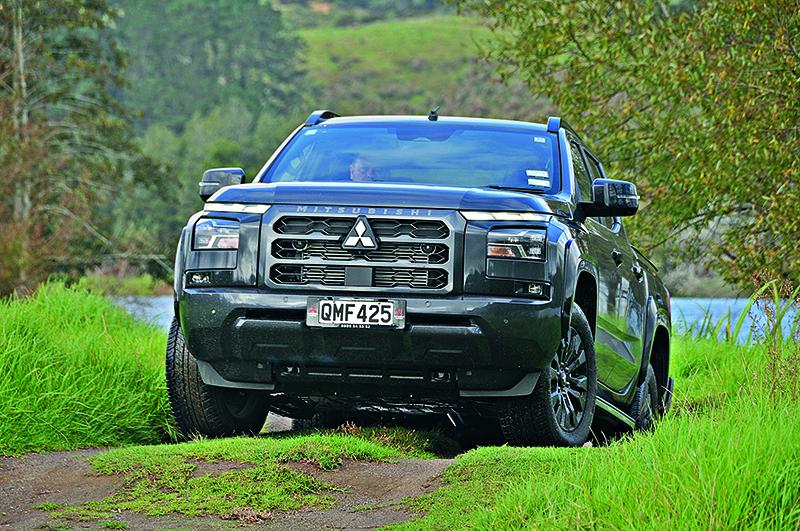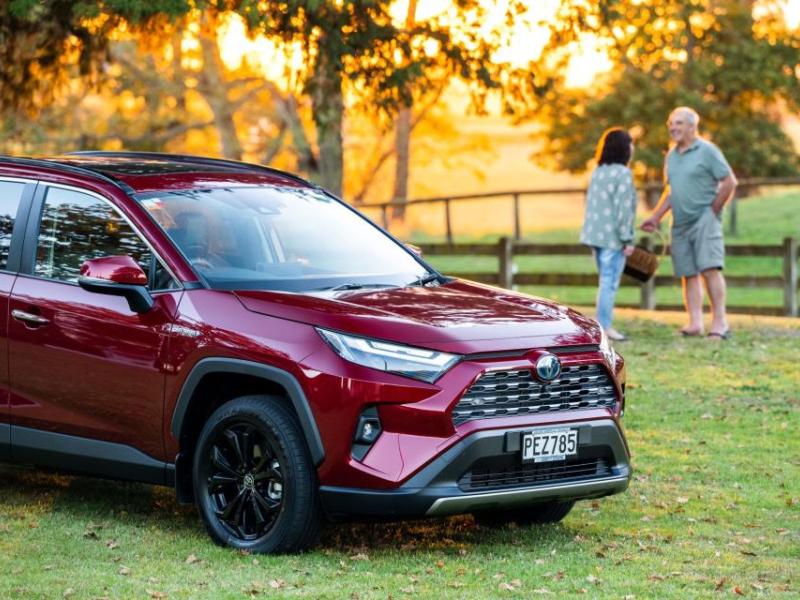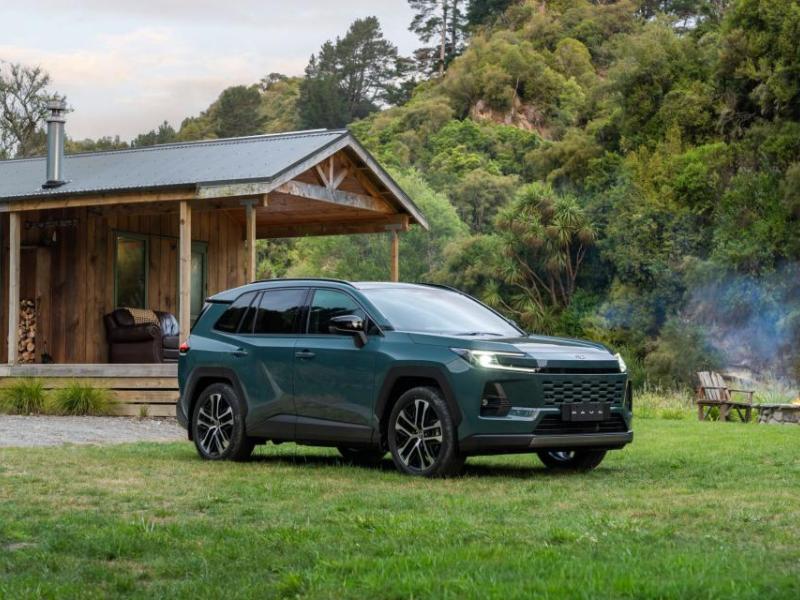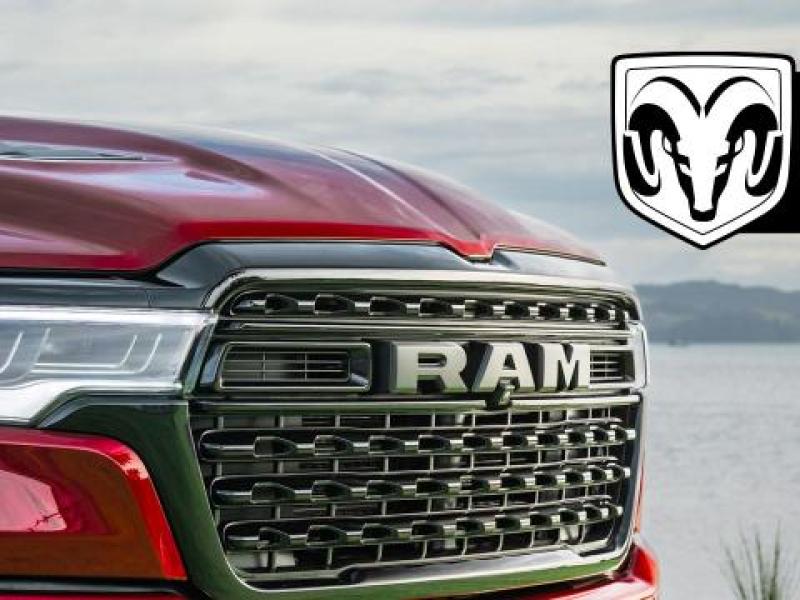Dave McLeod, editor Company Vehicle
It’s been a long time since I’ve been behind the wheel of a Mitsubishi Triton, so I was pretty stoked to get the opportunity to put the all-new model through its paces, both on and off-road.
The 6th generation Triton has been branded the ‘King of Beasts’ by the Mitsubishi marketing team. That’s a big call, but then again, with more than 5.6 million unit sales across 150 countries since the Triton first launched in 1978, it’s got big shoes to fill.
The fifth generation model debuted in 2015, so Mitsubishi has had plenty of time to develop this new model and they’ve pretty much thrown everything at it. It sits on a new platform with thoroughly redesigned suspension, has more power and torque, and has a bigger footprint overall.
In terms of dimensions, the new Triton is 15mm longer, 50mm wider and sits on a 50mm broader wheel track. The wheelbase has grown too, it’s now 3130mm (from 3000mm), and the distinctive ‘J-pillar’ at the rear of the cabin has been flattened out.
Its grunty new ladder chassis boasts a 40 percent increase in bending rigidity and 60 percent improvement in torsional rigidity. Combined with its upgraded suspension and longer wheelbase, means that the road noise has been reduced while the ride comfort is next level.
Mitsubishi is offering the GLX, GLXR, GLS and the top of the line VXR. We were given the latter for the shoot-out, which was truly ‘fully-optioned’.
The design team has evidently spent a lot of time giving the new Triton a more masculine look, with wider fenders and wheel arches. The designers have also taken the opportunity to sharpen up its driveway appeal, with the likes of a more detailed grille (with Mitsubishi embossed up top) and narrow LED lights.
Flares, roof rails and side steps are the prime focus of the new Triton’s profile and there’s a bold beltline that bridges the gap between the ute’s gloss black 18-inch wheels shrouded in Maxxis 265/60r18 A/Ts.
The rear tailgate is what I would call substantial in weight, and the bed itself now holds a euro size pallet. There are tie-down points, but no power outlets. The tail lights are LED and the fitted towbar lays claim to 3.5T braked towing.
The entire vehicle has been squared off noticeably, with a more boxy demeanour at both ends. For those wishing to take this new ute off-road, its 30.4-degree approach angle, 23-degree rampover with 222mm ground clearance and 22-degree departure, has got you covered, though the wading depth is around 500mm.
Under the bonnet is a 2.4L MIVEC biTurbo diesel pushing 150kW and 470Nm through a six-speed automatic gearbox to a Super Select II four-wheel-drive system. The biTurbo reduces lag and the powertrain is more efficient (8.8L/100km) with emissions now lower too (233g/km).
Thanks in part to its increased wheelbase, the interior is far more roomy, and it’s more refined too, with improved styling and new levels of comfort. Premium leather covers the seats, steering wheel and gear selector, while a mix of piano blacks, dark titanium accents and contrast stitching fills the cabin’s trim. The seats are supportive and comfortable and there’s plenty of shoulder space for those in the front.
There’s USB-C and USB-A power available up front, along with a wireless charging pad and there are pop-out cup holders on the dashboard that will keep your drinks hot or cold depending on what level you set the AC. There are numerous cubby holes for stuff including large door card spaces.
The entire range of new Triton models come with a nine-inch infotainment display that’s easy to hook your smartphone up to and offers all the usual connected apps, plus a very handy 360-degree birds eye view camera. And added to this, along with a regular analogue speedometer and tachometer, there is a seven-inch digital multifunction display.
The second row of the Triton hasn’t been ignored either, it benefits greatly from increased external dimensions, giving a bit more space and comfort overall with legroom and headroom being much better. Instead of typical console-mounted air vents, Mitsubishi has a roof-mounted air recirculator that draws cooled or heated air from the front of the cabin and pushes it towards those in the rear.
For the road segment of the test, I kept the Triton in its more efficient 2WD (RWD) configuration, and even with the fresh downpour of rain on the tarmac sections, the improved ute felt stoic. The suspension is more malleable and forgiving than many other utes and although the diesel clatter was there, it was very subdued.
Mitsubishi has thrown a lot of additional ADAS features to the new Triton and the likes of blind spot and lane keep alerts, passenger and pedestrian awareness and (although only one level) adaptive cruise control, are really helpful. However, the addition of a new driver distraction system with its monitor sitting on the steering column can be quite frustrating because it’s easily obstructed and complains bitterly and frequently.
Heading onto the unsealed surfaces and again the new Triton felt right at home. High range 4WD is simple to engage and the more compliant suspension absorbed the corrugated ruts well. The nose is a little light for really fast cornering, but even unladen (which we were), the ute felt very confident on gravel.
The Super Select II system itself offers the driver seven drive modes, (four AWD modes) with both High Range locked centre diff and Low Range locked centre diff availability. Engaging the latter for the more challenging off-road segment flashes up the terrain suggestion on the digital screen on the driver’s instrument cluster – it’s essentially an idiot’s guide to off-roading, so perfect for me.
All the aforementioned angles came into play as I traversed the wet and slippery course and even with what I would deem ‘lesser-looking’ A/T rubber, the Triton’s clever 4WD system didn’t skip a beat.
The new Mitsubishi Triton can tow more, take better payloads, and is vastly improved in the looks, technology and capability departments. I personally don’t feel that it’s quite at the level of the ute-benchmark Ranger, however, when you start to add bang for your buck into the equation it becomes a very compelling alternative.
Mark Baker, editor NZ4WD
Mitsubishi should really be making a lot of noise about this new Triton. In driving dynamics, ergonomics, and the styling, it stands head and shoulders above the outgoing model.
Gone is that unusual rising curve that ended the cab on each side. Gone the old-school grille and front-end treatment. Gone, too, the slightly nervous feel when driving on low-grip surfaces like grass.
The new truck is thoroughly modern, the squared-off body sitting comfortably alongside our Ranger though it is slightly smaller in many dimensions. That said, the Triton is bigger in every dimension than the previous model, the new measurements including an extra 150mm in the wheelbase, which has taken it to 3,310mm and delivers improved cargo capacity – the wellside body can accommodate a 1200mm x 800mm euro-style pallet between the wheel arches.
Launched with minimal fanfare and now on sale in New Zealand, the new Triton is available in single and double-cab formats, with a choice of 2WD and 4WD, in GLX, GLXR, and premium VRX specifications. We lucked into a graphite-coloured VRX for this first drive.
The interior kicked off with a good vibe. We loved the seats. Sitting on leather or synthetic leather is always a pleasure when 4WDing. It’s ultra-comfortable and the satin finish of the ‘skin’ grips trousers better than fabric can. It’s more practical in mixed weather conditions too.
The infotainment screen and system have been upgraded to a nine-inch smartphone-linked display which comes with an embedded navigation system and wireless Android Auto and Apple Car Play functionality.
Mitsubishi has resisted the temptation to format the screen vertically and has kept a lot of key functions on old-school switches rather than the screen.
The Triton rides on 18-inch gloss black alloy wheels and the tyres were a pleasant surprise. This is the first time NZ4WD has tested a new truck fitted with Maxxis tyres, and though the treads are called all-terrain, they looked a bit urban next to the Ranger’s Dueler all-terrains. Interesting to see respected aftermarket tyre brands like Maxxis making inroads into the massive OEM factory-fit tyre market.
It’s fair to say as we arrived at our first off-road destination there was some uncertainty about the ability of these tyres to cope with river silt in these heavily carved-up tracks which give drivers an excellent chance to test the axle articulation and grip of their vehicles.
The tyres lack aggressive edge treads seen on most all-terrain designs, but with a range of void areas in the main tread they shed the silt with ease as we drove through holes and mud pools. Impressive.
All the while, the Triton’s suspension was walking in and out of the holes in the track, crossing up axles but barely giving away grip. At the turn-point to travel back, the truck matched the Ranger’s turn ability. Both were in 4WD, which blows out their claimed turn circle diameters; both required a three point turn to negotiate the hairpin.
The difference between the two came down to driver information. Triton’s slightly shorter bonnet tapers down, giving a better view of the holes and mud pools encountered. A small difference that could help a Triton driver get through a tough bush track unscathed and happy.
Both Triton and Ranger came equipped with towbars, which affect their departure angles. Neither, though, came out of the river tracks dragging weeds from a hang-up. Impressive.
Mitsubishi has retained the outgoing model’s 2.4-litre intercooled biturbo diesel engine, upgrading power to 150kW and torque to 470Nm. That is 10 percent and seven percent more than before, and it helps give the Triton its 3.5-tonne towing capability. The 4N16 retains the predecessor 4N15’s 2442cc capacity, 86.0 x 105.1mm bore and stroke dimensions, 16-valve DOHC layout and aluminium block, but now adds a second turbocharger. It has a wider torque ‘plateau’ than the Ranger, which helps its six-speed transmission keep the truck in its rev-range sweet spot.
Claimed fuel economy is 7.7l/100km.
The truck has a low, gruff rumble at idle. The sound is well damped and not unpleasant at low speed or on the open road.
The transmission is a six-speed auto – no change from the outgoing model – which copes smoothly with muddy bogs, gravel roads and the uphill and downhill hairpin turns of Klondyke Road.
In fact, the Triton is right in its element on Klondyke – a narrow, rutty single-lane goat track up into the caldera hills behind Port Waikato. Where the old Triton might have juddered wildly on the uphill ‘corduroy’ corrugations and random soft clay spots mid-corner, the new model is agile and responsive and transmits little if any road-judder to the cabin. In this, it’s every bit the equal of the Ranger, and that is high praise indeed.
All models across the range have a rear diff lock, and Mitsubishi’s Super Select II is standard on all 4WD models, offering Normal, Eco, Gravel, Snow, Mud, Sand and Rock drive modes. A large selector knob on the centre console accesses 4WD-hi or 4WD-lo. This system has a lockable centre diff that allows use of 4WD drive on tarmac. It includes 4X2 high range, 4X4 high range centre diff open, 4X4 high range centre diff locked, 4X4 low range centre diff locked and adds a locking rear diff.
Safety systems have been enhanced, with the new Triton receiving 10 additional systems including radar-based Front Cross-Traffic Alert, a Driver Monitoring System that uses a camera mounted on the steering wheel to detect a lack of driver attention, and adaptive cruise control. Other safety features include Lane Departure Prevention, Emergency Lane Assist, a Multi Around-View Monitor, and Moving Object Detection.
Of these, the Driver Monitoring System, an alertness monitor that uses a camera mounted dead-centre on the steering column, was perhaps slightly too active. Every time it couldn’t see the driver’s eyes it would chime a warning. Not handy off-road where the driver is often looking to either side to pick a line through mucky sections.
All this tech is necessary in order to score a five-star safety rating, which has just been confirmed.
While Mitsubishi has built the new Triton to cope with working life on farms or construction sites, another goal for any new ute today is to deliver levels of comfort and refinement which recognise that many ute owners live in urban areas and use their utes for family and recreational activities. The Triton delivers both.







